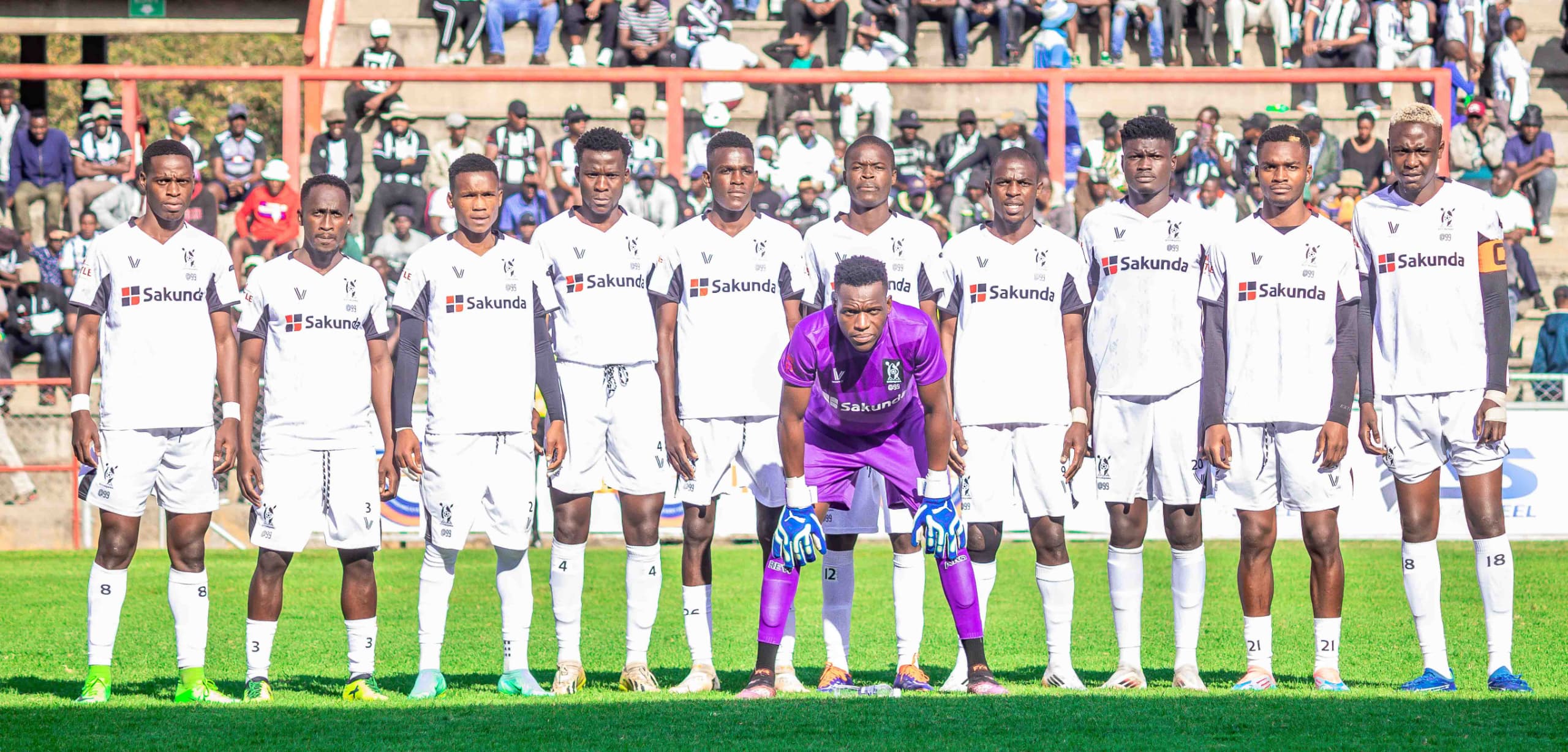Club colours – Stripped Black & White Shirts & black/white shorts – (AMAWABA)
Highlanders Football Club was formed in 1926 by the descendants of Mzilikazi who were the grand sons of Lobengula. Albert and Rhodes Khumalo, born of Njube who was Lobengula’s son were sent to study agriculture at Lovedale Institute in South Africa. While in South Africa the brothers developed the love for the game.
The origins of soccer started sometime in 1890 with its roots with the police in causeway in then Salisbury. The brothers would return to the country and stay at Lonely Mine where they found life very boring. Their stay in South Africa had changed their lifestyles and they could not cope up with the slow life back home as their age mates were still glued to traditional games like hunting. With life boring at Lonely Mine, the two brothers then decided to move to Bulawayo where they bought a house for Pounds at Makokoba.
That was the beginning of what has become a landmark feature of Zimbabwean life today. Among some of the early players were James Chilongotsha, Peter Lufumo, Samule Mlilaya and Dan Gasela. The team played in a local league that only got more organized in the 1950s. For long during the amateur soccer days the Osborne Trophy was the ultimate motivation for representative side from Gweru, Harare and Mutare. After debating a number of names in early 1937, the members resolved to change the name to Matabeleland Highlanders Football Club.
The club was originally known as Lions Football Club. The club dropped its regional tag ‘Matabeleland’ in March 1975. There had been a number of running battles in ensuing years involving Highlanders and Mashonaland United. Several people would be left seriously injured as tribal battles emanated in Bulawayo and the late former Vice-President of Zimbabwe Doctor Joshua Nkomo, invited former Bulawayo Town Clerk Mike Ndubiwa and present Highlanders Board Secretary Jimmy S. Ncube and instructed them to drop Matabeleland and he met Mashonaland United leaders and advised them to come up with a name that bore some resemblance of a national character hence the birth of Highlanders and Zimbabwe Saints.
With Albert and Rhodes having gone for too long at some stage in 1937, the club found itself without money to buy uniforms and balls. Nsele then received a letter from the Khumalo brothers instructing him to cycle to Pupu to get some gold pieces from the Khumalo brothers instructing him to cycle to Pupu to get some gold pieces that were too sold to raise money. (Source-interview between Nsele Hlabangana and Lovemore Dube, Chronicle Sports Reporter 18 September 1997 at Montrose, Bulawayo).
Highlanders adopted a cosmopolitan outlook from its early days of inception with membership open to all at that time. Other teams chose to gather players on ethnic lines. There were teams like North Rhodesia, Nyazura, Chibi, Mutambara, Eastern Brothers, Chilimanzi, Melsetter, Gwelo and Umtali to mention just a few. Every major district in the country with a sizeable population found itself with a team in the exception of those citizens drawn from the two Matabeleland Provinces who found themselves adequately represented by Matabeleland Highlanders whose players were drawn from the expatriate labour force from Malawi and Zambia and those from the Shona tribes.
The tradition of hiring players from other places has been maintained to this day that the team remains a truly Zimbabwean representative entity.
Highlanders would play against clubs from within the city, other towns as well, apart from schools like Inyathi and Dombodema Missions. The team’s progress like all other sport was affected by the Second World War in 1939 – 1945 as natives fought alongside the British troops. (Source: N. Hlabangana 18 September 1997).
Among some of the big tournaments that Highlanders won in the first 30 years include the David Livingstone Memorial in 1955. Three teams which include Highlanders would every year travel to Livingstone, Zambia to take part in the Livingstone Memorial Trophy.
The club has been associated with several ‘firsts’ which include:
–first club to win the Chibuku Trophy from the Southern Region
-First club from the Southern Region to win the league title
-First team to win the Chibuku Trophy in independent Zimbabwe
-First club to win the first Heroes Trophy (1980)
-First club to win the Independence Trophy
-First club to win the new Castle Cup in 1986
-Blue Ribbon League title in 1993
-First club to win the league title four times in a row in the modern day Premiership
-First Zimbabwean team to play in Europe, Germany tour 1987
-Most successful club in the history of the PSL with five titles in 12years.
During the years the club has transformed from just a social organization to become a commercial entity that has a sellable brand. It boasts of membership above four thousand who are based all over the world. The club has an average attendance of between 8 000 and 26 000 depending on the opposition. Among some of the greatest developments at the club was acquiring properties which include a clubhouse, a camping house and an office in Bulawayo’s Central Business District.
It became the first to buy a clubhouse in 1986.The club’s administrative structure is governed by a constitution. The constitution spells out the objectives of the club as well as the governance structure which is composed of Members of the Club (Life and Ordinary), Trustees, Board of Directors, Executive Committee, Chief Executive Officer and employees.
This club has been and still remains the brand that all progressive people love to be associated with. This is because the organization has scored a number of successes since its establishment.

